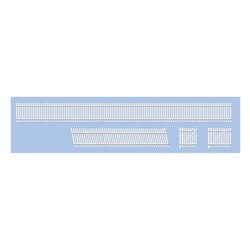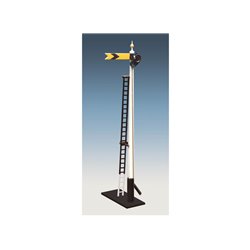Cross lock tweezers are for all intense purposes regular tweezers, they are roughly the same size and are used for...
No products
Product successfully added to your shopping cart
There are 0 items in your cart. There is 1 item in your cart.
Search Tips
Christmas and New Year
We are dispatching orders every weekday apart from Christmas Day, Boxing Day and New Year's Day.
If you order is time critical, select next day delivery at checkout.
The shop in Sandown is closed from 25th December, reopening on 30th December.
What is the GWR Firefly Class?
The Firefly Class was a series of broad-gauge steam locomotives built for the Great Western Railway (GWR) between 1840 and 1842. Designed by Daniel Gooch, the GWR's first Locomotive Superintendent, these engines played a crucial role in shaping early railway operations in Britain. The Firefly Class was a direct improvement on the earlier Star Class and was intended to provide greater speed and reliability on GWR’s expanding network.
These locomotives were designed for passenger services and became some of the fastest engines of their time. With a 2-2-2 wheel arrangement, they featured a single large driving wheel in the centre, which allowed for high speeds on the GWR's broad-gauge track (7 feet ¼ inch). This design reduced rolling resistance, enabling Firefly Class locomotives to achieve speeds of over 60 mph, an impressive feat for the early railway era.
The class consisted of 62 locomotives, all named after birds, insects, and mythological figures, with Firefly being one of the most notable. They were built at various workshops, including Fenton, Murray & Jackson, R. & W. Hawthorn, and Sharp, Roberts & Co., reflecting the GWR's early reliance on external manufacturers before it fully developed its own locomotive works at Swindon.
One of the most famous achievements of the Firefly Class was proving the superiority of locomotive traction over horse-drawn transport. In 1840, a Firefly locomotive famously outran a horse-drawn coach in a well-publicised race, reinforcing the potential of steam-powered railways as the future of transport in Britain. The class became the backbone of GWR express services, linking London with the West Country and South Wales.
However, the Firefly Class had a relatively short working life. By the 1860s, advances in locomotive technology made them obsolete, and they were gradually withdrawn from service. The broad-gauge system itself became a limiting factor, as most of the country adopted the standard gauge (4 feet 8½ inches). By 1870, all Firefly Class locomotives had been scrapped or converted to newer designs.
Although none of the original Firefly Class locomotives survive today, a working replica of "Firefly" was built in the 20th century and can be seen at the Didcot Railway Centre. This replica provides a fascinating insight into the engineering of early railway locomotives and offers heritage railway enthusiasts the opportunity to experience what rail travel was like in the mid-19th century.
The Firefly Class was a pioneering step in British railway history, demonstrating the potential of steam power and laying the foundation for future locomotive development. If you are interested in early railway engineering, the legacy of these locomotives is still visible in the evolution of express passenger trains that followed in their wake.
Click here to receive the tips weekly in your mailbox. You can unsubscribe at any time.










